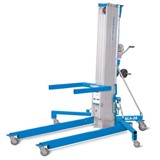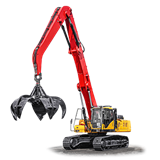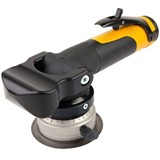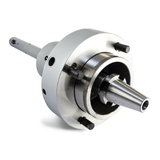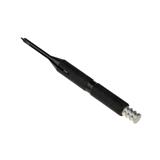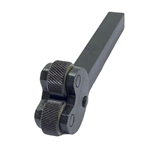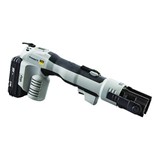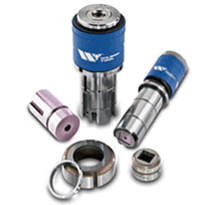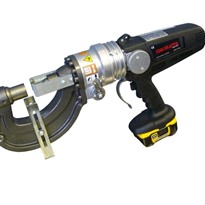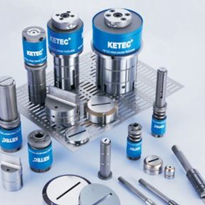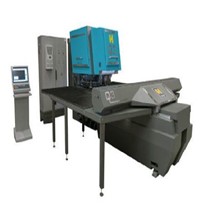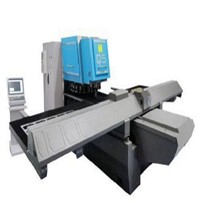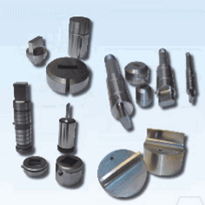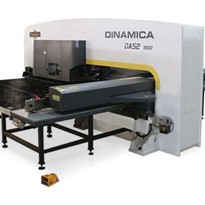On occasion, CNC punching machines will get the call to process materials 1⁄4 in. or thicker, with applications including automotive treadplates, for example, and part production for agricultural and other industries. At the extreme end, producing electrical busbars sometimes means punching copper or aluminium as thick as 1⁄2 in.
Whether a harder steel or a softer aluminium, thick is thick, and thick material presents unique challenges, with two real possibilities: tool breakage on impact due to shock; and tool breakage during the longer-lasting stripping process. So what’s a fabricator to do? Fortunately, solutions exist, offers Susan Erler, punching product manager for Wilson Tool International.
“CNC punching may include using 16- or 14-gauge material for electrical boxes, computer chassis or cabinets,” Erler says. “Occasionally, you'll see 10-gauge material and think, ‘oh boy, that's thick.’ Well, busbar fabricators think that working 1⁄4-in. material is like punching butter.”
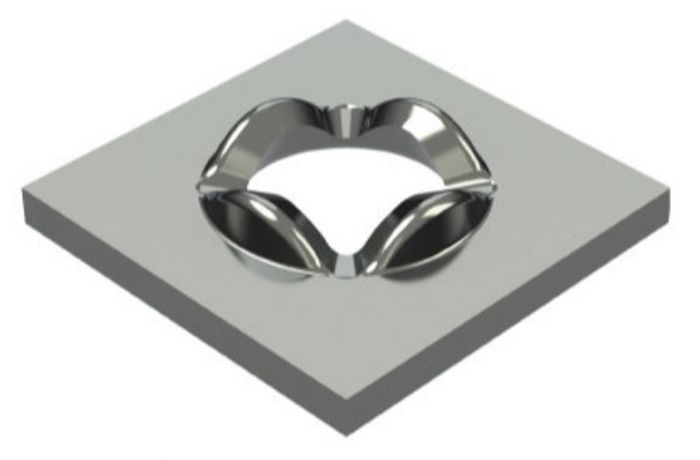
CNC punching machines may get the call to turn thick material into products such as this treadplate. Such applications greatly affect tool life, but punch tapering and other solutions can prove effective.
Butter it’s not, of course, and the vast majority of fabricators find thick material a tricky proposition. But don’t despair, as Erler offers seven tool tips for successful thick-sheet punching, with this caveat: “Thick, mild steel acts similarly all of the time. Thick, softer materials such as copper, aluminium and brass, react differently. They sometimes require a trial-and-error approach.”
1. Check the Tonnage
Material thickness greatly affects the amount of force needed to punch a hole.
The formula for calculating required tonnage:
Land Inches x Material Thickness x Shear Factor x 25
“On thick material, it doesn’t take a very large hole to maximize a CNC punching machine’s tonnage,” says Erler. “For example, a 2-in.-dia. hole in 1⁄4-in.-thick material requires more than 39 tons of force, which exceeds the capacity of most machines.”
2. Maintain Proper Die Clearance
When punching material beyond 10-gauge thickness, Erler and Wilson Tool recommend increasing die clearance by 5 percent to provide the punch with room to exit. This means boosting the clearance for aluminium (recommended as 10 percent on 10-gauge) to 15 percent, and for mild steel (recommended as 15 percent on 10-gauge) to 20 percent.
“Too tight of a clearance can cause stripping problems, premature tool wear and even tool failure,” Erler warns. “As the punch scrapes up through that thickness of material as it retracts, all of that material essentially holds onto the punch. An overly tight clearance just exacerbates the problem.”
3. Mind the Stripping
While improper die clearance contributes to stripping issues, stripping a punch out of thick material can be challenging even with the proper clearance.
“To help reduce stripping issues, consider switching to a larger station for more stripping force,” says Erler. “If a tool normally fits in a B station, try running it in a C or even D station.” Adding extra back taper to the punch also can help with stripping on thicker material.
“With extra back taper, the punch becomes smaller as it penetrates the material,” she explains, “meaning that less surface area on the punch drags through the material as it’s stripping. This doesn’t help as far as the shock impact of hitting the hole, but greatly assists with stripping.”
4. Punch Construction Matters
“Use punches made from powdered metal,” says Erler. “They’re stronger and adds shock resistance upon the punch first hitting the material. Given advances in metallurgy, many tool suppliers offer powdered-metal punches at economical prices.”
Also recommended: adding a coating to a punch.
“When punching soft material such as aluminium or copper, coating should be considered a must-have,” Erler says. “Soft materials become gummy when punched, which causes stripping failures. Wilson Tool, for example, offers several coatings that greatly reduce stripping problems in softer materials.
“For mild steels, the value proposition from coating becomes less obvious,” she continues. “If stripping isn’t a problem, the added cost of coating may not be worth it when considering that tool life is reduced when punching thicker mild steel.”
Noting that punching any thick material stresses the tooling, Erler recommends placing a shear on the punch to reduce required tonnage when just punching a hole.
“A rooftop shear is the best bet for hole-punching. Any shear will reduce needed tonnage, but a rooftop shear is strongest and best handles a full hit.”
For parting in thick material, Erler recommends a concave shear.
“Using a rooftop shear on a slitting tool, for example, requires that least 75 percent of the tool length penetrates the material on every hit,” she explains. “This doesn’t always happen in the real world, as software designed to optimize the number of hits may instruct only a 25-percent length on the last hit.”
Here, a fabricator may be advised to use a bridge hit—skipping the second-to-last hit to make the last hit, then returning to hit the remaining material with the center of the punch.
“But my experience tells me that not too many fabricators will go through the hassle of programming for bridge hits,” Erler says. “Using a rooftop shear on a slitting tool for thick material creates a side load that is very tough on the punch. Consider a concave shear, which still reduces the needed tonnage while better inverting the stresses of that high-tonnage application.”
5. Properly Maintain Tooling
There’s no getting around the fact that punching thick material results in a higher tool-wear rate.
“Check the punch more frequently for wear,” says Erler. “Though seemingly counterintuitive, more frequent sharpening actually extends tool life. In addition, dull tools increase the tonnage required to punch a hole. Punching thick material typically means running at higher-than-ideal tonnage, and a dull tool only will increase that tonnage.”
Also important in extending tool life: proper turret alignment and lubrication.
6. Sacrifice Grind Life for Strength
Consider reducing the straight-before-radius on a punch tip, recommends Erler, as the stouter punch provides added strength for punching thick material.
“This results in reduced grind life,” she says, “but the reduced risk of catastrophic failure often makes this sacrifice worth it. The stout punch decreases the odds of a punch breaking upon impact.”
7. Consider a Tool Insert
Implementing some or all of the advice above can improve the success rate and tool life when punching thick material. Take it to the next level, recommends Erler, by switching to a tool-insert design. Advantages include significantly lower replacement costs than with full-body tooling, quicker setup times and lower storage requirements.
“Even when doing everything right, tools do not last as long when used on thicker material, so reducing costs by using inserts just makes sense,” she says. “And, if adding a coating, it’s on a smaller area, which also reduces costs.”
Bonus Tip: Radii on Corners
Beyond these seven tips, fabricators can improve tool performance and life when punching thick material by re-assessing the hole shape.
“Whenever possible,” Erler suggests, “place a radius on any sharp corner—perhaps a few millimeters or a millimeter radius on four corners of a rectangle. Something as simple as this helps increase tool life.” MF





